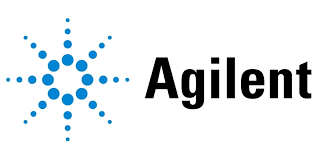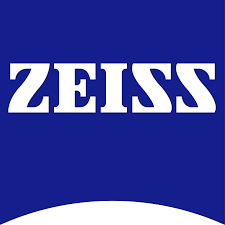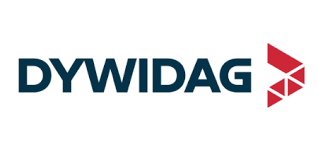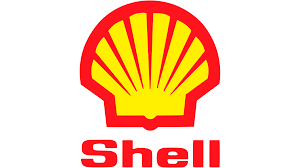Wind Turbine Scrap Market Report
Published Date: 15 December 2025 | Report Code: wind-turbine-scrap
Wind Turbine Scrap Market Size, Share, Industry Trends and Forecast to 2033
This report provides a comprehensive analysis of the Wind Turbine Scrap market from 2023 to 2033, offering insights into market trends, segmentation, regional dynamics, industry leaders, and future forecasts.
| Metric | Value |
|---|---|
| Study Period | 2023 - 2033 |
| 2023 Market Size | $5.20 Billion |
| CAGR (2023-2033) | 7.8% |
| 2033 Market Size | $11.27 Billion |
| Top Companies | Veolia Environnement S.A., SUEZ, Siemens Gamesa Renewable Energy, GE Renewable Energy, Innergex Renewable Energy |
| Last Modified Date | 15 December 2025 |
Wind Turbine Scrap Market Report (2023 - 2033)
Wind Turbine Scrap Market Overview
Customize Wind Turbine Scrap Market Report market research report
- ✔ Get in-depth analysis of Wind Turbine Scrap market size, growth, and forecasts.
- ✔ Understand Wind Turbine Scrap's regional dynamics and industry-specific trends.
- ✔ Identify potential applications, end-user demand, and growth segments in Wind Turbine Scrap
What is the Market Size & CAGR of Wind Turbine Scrap market in 2023?
Wind Turbine Scrap Industry Analysis
Wind Turbine Scrap Market Segmentation and Scope
Tell us your focus area and get a customized research report.
Wind Turbine Scrap Market Analysis Report by Region
Europe Wind Turbine Scrap Market Report:
Europe remains a leading region with a market value of $1.90 billion in 2023, projected to grow to $4.11 billion by 2033. The EU's aggressive green initiatives and commitment to recycling technologies place this region at the forefront of developing efficient practices for wind turbine scrap.Asia Pacific Wind Turbine Scrap Market Report:
In the Asia Pacific region, the Wind Turbine Scrap market is expected to grow from $0.84 billion in 2023 to approximately $1.82 billion in 2033, driven by rising investments in renewable energy and effective waste management solutions. Countries like China and India are leading the charge in wind energy consumption and are progressively enhancing their recycling capabilities.North America Wind Turbine Scrap Market Report:
The North American market, valued at $1.72 billion in 2023, is expected to more than double to $3.73 billion by 2033. The region's emphasis on sustainability practices, supported by stringent environmental regulations, is fostering advancements in the recycling of wind turbine scrap.South America Wind Turbine Scrap Market Report:
South America currently generates a modest share of the Wind Turbine Scrap market, with its value anticipated to increase from $0.27 billion in 2023 to $0.60 billion by 2033. With countries like Brazil turning to wind as a source of energy, the focus on efficient recycling solutions will expand in the next decade.Middle East & Africa Wind Turbine Scrap Market Report:
The Middle East and Africa market is also expanding, with projections indicating growth from $0.47 billion in 2023 to around $1.01 billion by 2033. An increasing focus on renewable energy projects in countries such as South Africa is likely to escalate the wind turbine scrap market.Tell us your focus area and get a customized research report.
Wind Turbine Scrap Market Analysis By Material
Global Wind Turbine Scrap Market, By Material Type Market Analysis (2023 - 2033)
The Wind Turbine Scrap market is dominated by composite materials and metals, accounting for a significant proportion of the overall size and share. For instance, the composite materials segment is expected to see growth in size from $3.28 billion in 2023 to $7.10 billion by 2033, representing nearly 62.99% of the market share. Metals will follow with a size growth forecasted from $1.41 billion in 2023 to $3.07 billion by 2033, corresponding to a 27.2% share. The significance of these segments lies in their potential for recovery and reuse, which is vital for the sustainable growth of the wind energy sector.
Wind Turbine Scrap Market Analysis By Collection Method
Global Wind Turbine Scrap Market, By Collection Method Market Analysis (2023 - 2033)
Collection methods play a pivotal role in enhancing the efficiency of recovering wind turbine scrap. Current estimates suggest that on-site recycling is the dominant collection method, expected to account for 62.99% of the market share by 2033, with an increase in market size from $3.28 billion to $7.10 billion. Transportation to recycling facilities and partnered recycling programs also hold relevance, with growth sizes of $1.41 billion adapting to $3.07 billion by 2033, capturing 27.2% market share. Effective collection methods not only reduce costs but also enhance recovery rates of valuable materials.
Wind Turbine Scrap Market Analysis By End Use
Global Wind Turbine Scrap Market, By End-Use Application Market Analysis (2023 - 2033)
The end-use applications of Wind Turbine Scrap include manufacturing new products, which is the leading segment. This segment is poised for significant growth, with an anticipated increase in size from $3.28 billion in 2023 to $7.10 billion by 2033, representing 62.99% of the market share. Construction materials follow suit, targeting a growth from $1.41 billion to $3.07 billion by the end of the forecast period, constituting 27.2% of the share. Both segments are crucial for promoting sustainability and reducing waste in the industry.
Wind Turbine Scrap Market Analysis By Disposal Method
Global Wind Turbine Scrap Market, By Disposal Method Market Analysis (2023 - 2033)
Disposal methods within the Wind Turbine Scrap market are critical for understanding waste management practices. Landfill disposal holds a significant position, maintaining a constant share of 62.99% with sizes growing from $3.28 billion in 2023 to $7.10 billion by 2033. Incineration, while less favorable, is still relevant, with an anticipated growth from $1.41 billion to $3.07 billion, accounting for 27.2% of the share. Alternatives such as recycling and repurposing techniques will emerge, promoting a shift from traditional disposal methods.
Wind Turbine Scrap Market Analysis By Organization Type
Global Wind Turbine Scrap Market, By Organization Type Market Analysis (2023 - 2033)
The Wind Turbine Scrap market also features a diverse range of organization types participating in the sector. The public sector is distinctively the largest player, with expected market sizes soaring from $3.28 billion to $7.10 billion by 2033, securing 62.99% of the share. Private sector organizations, comprising a smaller portion, will grow from $1.41 billion to $3.07 billion, capturing 27.2% share. Non-profit organizations, focusing on sustainability and community involvement are also gaining traction, predicting size growth from $0.51 billion to $1.11 billion, holding 9.81% market share by 2033.
Wind Turbine Scrap Market Trends and Future Forecast
Tell us your focus area and get a customized research report.
Global Market Leaders and Top Companies in Wind Turbine Scrap Industry
Veolia Environnement S.A.:
A leader in waste management and resource recovery, Veolia focuses on innovative recycling solutions for renewable energy waste, including wind turbine scrap.SUEZ:
SUEZ is a prominent player in the waste management sector, providing sustainable solutions for the recycling of various materials, including those generated from wind turbine decommissioning.Siemens Gamesa Renewable Energy:
Siemens Gamesa is a major manufacturer and contributor to the wind energy sector, actively developing initiatives for responsible end-of-life management of wind turbines.GE Renewable Energy:
GE Renewable Energy plays a key role in promoting sustainability, investing in technologies that enhance the recycling and recovery of materials from wind energy structures post-use.Innergex Renewable Energy:
Innergex focuses on renewable energy production and values sustainability in its waste management practices, especially related to wind turbine components.We're grateful to work with incredible clients.









FAQs
What is the market size of wind Turbine Scrap?
The global wind turbine scrap market is expected to grow from $5.2 billion in 2023 to a projected size reflecting a CAGR of 7.8% by 2033, emphasizing the industry's strong expansion due to increasing dismantling and recycling needs.
What are the key market players or companies in the wind Turbine Scrap industry?
The key players in the wind turbine scrap market include specialized recycling companies, manufacturers with expertise in wind turbine production, and waste management firms focused on renewable energy sectors, though specific company names are proprietary and not disclosed.
What are the primary factors driving the growth in the wind Turbine Scrap industry?
The growth in the wind turbine scrap industry is driven by increasing wind energy installations, regulatory push for recycling, environmental sustainability practices, and the rising value of scrap materials, making recycling more profitable.
Which region is the fastest Growing in the wind Turbine Scrap?
Europe leads as the fastest-growing region in the wind turbine scrap market, expanding from $1.90 billion in 2023 to $4.11 billion by 2033, showcasing a robust commitment to renewable energy recycling.
Does ConsaInsights provide customized market report data for the wind Turbine Scrap industry?
Yes, ConsaInsights offers customized market report data for the wind turbine scrap industry, providing tailored insights and analyses to meet specific client needs and help guide strategic decision-making.
What deliverables can I expect from this wind Turbine Scrap market research project?
Deliverables typically include comprehensive reports outlining market trends, forecasts, regional analysis, competitive landscape, and detailed segment insights to inform business strategies in the wind turbine scrap industry.
What are the market trends of wind Turbine Scrap?
Current market trends in the wind turbine scrap industry include increased recycling efforts, adoption of innovative recycling technologies, and a rising focus on sustainability, as companies seek to minimize waste and maximize resource reuse.
